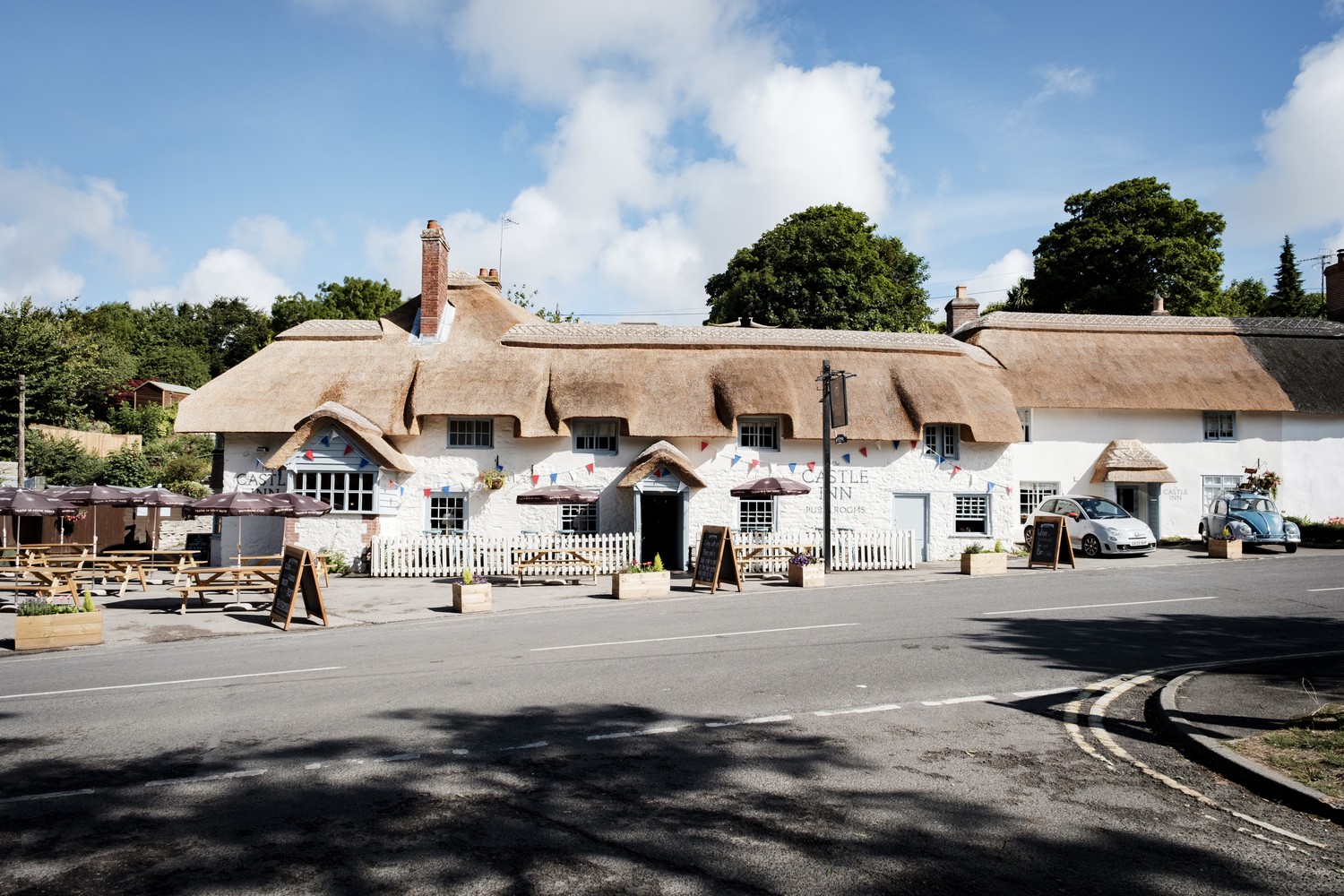The Swan to The Ring O Bells
START:
From the Swan car park opposite the pub, turn left and walk back along the road, passing the attractive church, parts of which date back to the c14th. After a few minutes turn right on the first public footpath – a narrow stony path dropping downhill. Reach a crossing track at Dolebury Bottom below the hillfort.
1.DOLEBURY BOTTOM
Turn left along the track all the way to a gate. This leads to a small unsurfaced parking area. Cross a stile on the right by an information board about Dolebury Hillfort, the history and the flora and fauna. Climb steeply up steps all the way to the outer, lower bank of the hillfort.
2.HILLFORT
Dolebury Iron Age Hillfort was around 3000 years in the making. It was built not because of the threat of attack but more in case of one. It still commands a dominant position, but its role has changed. Now recognised as a Scheduled Monument and Site of Special Scientific Interest, its defensive days and that of a rabbit warren are long gone. Its commitment to wildlife has become the new role.
Bear left on the lower bank following it round to the western entrance of the hillfort. Come down off the bank and turn right on the path which climbs steadily up across the open grassland through the centre of this huge area. Stay on the main track. Near the top go over a mound of stone which is the remains of the old warrener’s cottage.
His job was to look after the rabbit population – a major source of food.
Continue on and leave the fort through the eastern gate. Follow the main grassy track down, through a gate passing several hollows, the remains of former mining. The path narrows. Stay to the right on the main path, also signed as the Limestone Link, which goes down through woodland. Then fork right with the fir woodland on your right and reach a wide crossing track on the sloping side of the valley. Turn left and follow the track down, through a gate, and across the grassland to a stile by a gate at the foot, to exit Dolebury Warren.
Turn right . Shortly, bear up left on the stony track climbing gradually for a few minutes and reach a wooden gate.
3.BLACK DOWN
This is a long section taking you up onto Black Down. So, after going through the gate, turn right on a track out in the open, dropping down. Continue, climbing up onto Black Down and with the forest parallel on your right. Ignore any side turns. The path eventually drops down to a long boardwalk over a stream and continues to climb again. Just below the top of the hill reach a broad crossing track with a large Dolebury Warren sign by the forest on the right at two gates. Turn left, away from the forest, staying on Black Down. This broad track begins a steady climb up towards the Trig Point. There are widespread views over Wrington Vale, across the Severn Estuary and beyond to Wales. You may see Exmoor ponies. Go over a wide crossing track which is the old route over Mendip to Cheddar, Continue on. Join a larger track, coming in from the right and maintain direction to the trig point on Black Dowbn..
The mounds or ‘tumps’ are part of a WW2 decoy city created when Britain stood alone after the fall of Europe in 1940. This Pinewood Studios deception was one of many throughout the country and with clever lighting effects could simulate the railway yards and building in Bristol. They stretch all the way to the Trig Point on Black Down, the highest point of Mendip at 325m, 1,068ft.
Pass the trig on your left and follow the track on, slightly right. This becomes narrow and eroded and leads to a gate off the hill.
4.GATE
Follow the narrow path all the way up to twin masts.
5.MASTS
Join a tarmac track and follow this to the right of the wire compound and drop downhill.
The radio masts are a left over from the ‘Cold War ‘ days , but this may also have been the site of a Roman signal station. Down the track to the left and right lie the remains of a Roman settlement that grew up around the lead mining and was bigger than Bath in the c1st AD .
At the bottom of the track/lane (Rains Batch), reach a road. Turn right and after a couple of minutes cross left over a marked stile. Go down the right side of the field following what is the line of the old Roman Road and cross a stile into Blackmoor Nature Reserve.
6.BLACKMOOR RESERVE
This is an interesting area of old diggings associated with the lead re-smelting industry. The path is surfaced with black slag from the resmelting.
Follow the path through marsh and ponds, between the old settlement dams which were part of the lead works. On reaching an area of black slag continue straight on up a smaller path and up steps to a wide crossing track. Turn left. Soon reach a more open area, with the ruins of an old cottage on the right.
Here turn right and soon come alongside the remains of horizontal lead flues. Photo of Flues
These are the remains of the Victorian lead works that closed in the 1880s. These flues condensed the lead -laden gas from the smelter to re-claim every bit of lead. This site was an industrial wasteland which is now a valuable wildlife habitat.
The path continues under a beautiful avenue of beeches.
Go through a kissing gate and continue on. At the end, pass over on your left Nordrach .
This house was once a hospital for the treatment of advanced TB and during WW2 it housed Bristol Children’s Hospital.
7.MAIN ROAD
Cross and take the road opposite towards Compton Martin and West Harptree. After 0.75 miles at a sharp right bend reach Hazel Manor Lodge.
8.HAZEL MANOR DRIVE
Go through the gates onto the tree-lined drive, joining the newly established Yeo Valley Way.
This area is part of huge planting of woodland about 20 years ago and is now owned by Yeo Valley Organic.
Follow the drive all the way down, passing the site of the old Hazel Manor that burned down in March 1929. Bend right to reach Hazel Farm. Follow the arrow across to the end of a stone barn and a gate . Go through and turn left down the side of the wall. At the corner, bear away down a gully towards woodland below.
9.WOODLAND
Go through a large deer gate and straight over the Yeo Valley Way into Compton Wood. Stay on the main track which descends (ignore the left hand) through this beautiful wood (bluebells and wild garlic in spring). Cross a stile by a gate and carry on down. At a junction make sure you follow the marked arrow. The path becomes narrower and at a junction of paths keep left and drop down to reach the end of Coombe Lane. Turn down the lane past ges to the main road. Finally, turn left and reach the Ring O Bells.
 BACK
BACK











